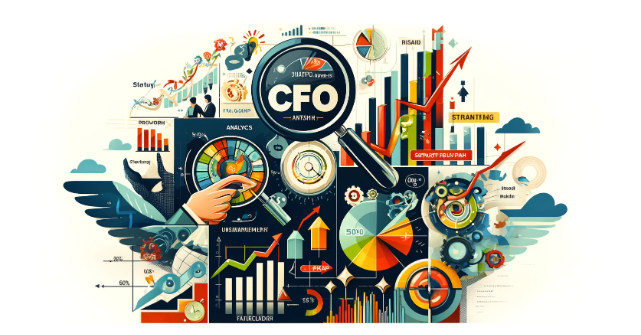Financial dashboards are an effective tool for tracking and analyzing your finances. They allow you to easily monitor performance, identify trends, and generate insights, all in one convenient place. In this article, we will discuss the different types of financial dashboards, how to set up and use one, and how to analyze data with a financial dashboard. We will also look at the benefits of leveraging financial dashboards so that you can make the best use of them for your financial needs. So read on to learn more about leveraging the power of financial dashboards.
Types of Financial Dashboards
Software-based financial dashboards are great tools for tracking and managing your finances. They offer a range of features, such as budgeting tools, spending tracking, and performance monitoring. They also allow you to easily create visual representations of your data so that you can quickly identify trends and gain insights. Software-based financial dashboards are generally user-friendly and offer a variety of customization options, making them a great choice for anyone looking for an easy-to-use, comprehensive financial dashboard.
Online financial dashboards are even more convenient than software-based ones. They allow you to access your financial data from anywhere, at any time. They also offer a range of features, such as budgeting tools, spending tracking, and performance monitoring. You can also customize your dashboard to fit your individual needs and preferences. Additionally, most online financial dashboards offer free trials and affordable subscription plans, making them a great option for anyone looking for an easy-to-use, comprehensive financial dashboard.
Setting Up a Financial Dashboard
Before you can get the most out of a financial dashboard, you need to establish your financial objectives. This means deciding on your goals and developing a plan for achieving them. This can include setting a budget, tracking your spending, and creating an emergency fund. Once you have your objectives in place, you can use your financial dashboard to monitor your progress and make sure you stay on track.
An important step in setting up a financial dashboard is developing a budget. A budget is a plan for how you will use your money and manage your finances. It should include your expected income, expenses, and savings goals, as well as any debt repayment plans. When you have a budget in place, you can use your financial dashboard to track your spending and make sure you stay on track. This will ensure that you can reach your financial objectives.
Tracking your spending is an essential part of setting up a financial dashboard. This allows you to understand where your money is going and how much you are spending. It also helps you identify areas where you can cut back or save more money. Many financial dashboards offer features such as budgeting tools and spending trackers, which make it easier to stay on top of your finances. With these tools, you can quickly see where your money is going and make adjustments as needed.
Analyzing Data with Financial Dashboards
Monitoring performance is an important part of analyzing data with financial dashboards. This allows you to track the progress of your finances over time and make sure that you are on the right track. Many financial dashboards offer features such as charts and graphs that allow you to easily visualize your data. This makes it easier to identify trends and gain insights. It also allows you to make sure that you are meeting your financial objectives and staying on track.
Identifying trends is another important part of analyzing data with financial dashboards. This allows you to see how your finances are changing over time and make sure that you are on the right track. Many financial dashboards offer features such as charts and graphs that allow you to easily visualize your data. This makes it easier to identify patterns and gain insights. It also allows you to make sure that you are meeting your financial objectives and staying on track.
Generating insights is a crucial part of analyzing data with financial dashboards. This allows you to understand your finances in greater detail and make better decisions. Many financial dashboards offer features such as charts and graphs that allow you to easily visualize your data. This makes it easier to identify trends and gain insights. It also allows you to make sure that you are meeting your financial objectives and staying on track.
Conclusion
In conclusion, financial dashboards are powerful tools for managing your finances when working with a fractional cfo. They allow you to easily monitor performance, identify trends, and generate insights, all in one convenient place. They also offer a range of features, such as budgeting tools, spending trackers, and performance monitoring, making them a great choice for anyone looking for an easy-to-use, comprehensive financial dashboard. By leveraging the power of financial dashboards, you can take control of your finances and make the best use of them for your financial needs.

